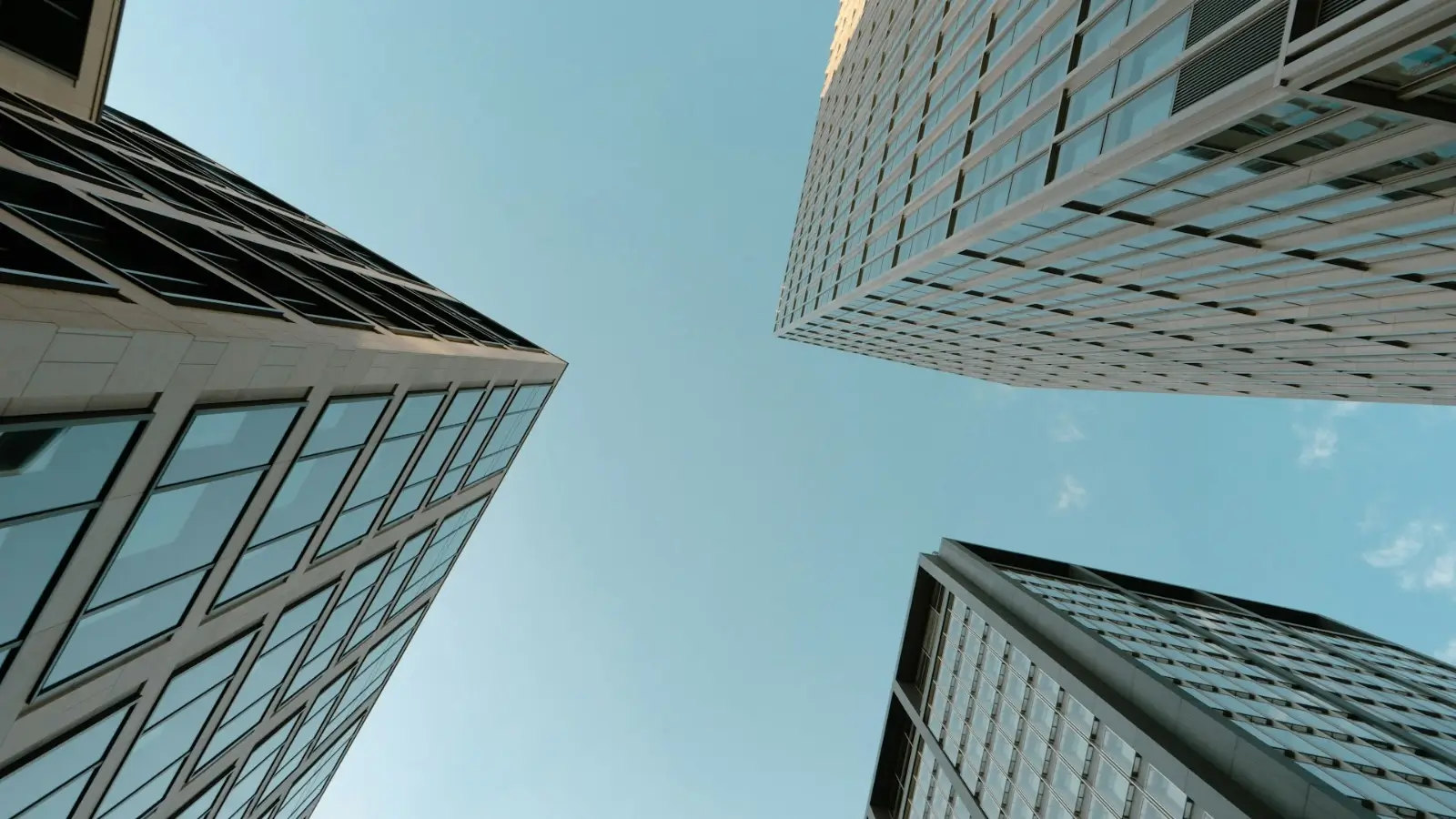


Let's be honest—growing a business isn't just about having a great idea or solid sales strategy. It's about navigating countless challenges that pop up when you're trying to expand. From dealing with site limitations to managing spiraling costs, business development can feel like juggling flaming torches while riding a unicycle.
The good news? Most of these challenges have practical solutions. Whether you're opening a new location, expanding your facilities, or upgrading your operations, understanding what problems you'll face—and how to tackle them—makes all the difference. Modern businesses are finding smarter ways to handle everything from foundation work to environmental compliance, and we'll explore these solutions throughout this article.
Let's walk through the most common roadblocks you'll encounter and what you can actually do about them.

Here's something many business owners learn the hard way: your beautiful expansion plans mean nothing if your site can't support them. Maybe the soil's unstable. Maybe there's underground water issues. Maybe the existing foundation just wasn't built for what you're planning now.
The mistake most people make is discovering these problems after they've already signed contracts and set timelines. Then you're scrambling, costs are ballooning, and your grand opening date becomes a moving target.
Smart businesses start with thorough site assessments. Get geotechnical surveys done. Understand what you're working with before you commit to anything. Yes, it feels like an extra expense upfront, but it's nothing compared to the cost of fixing foundation problems halfway through construction.
Traditional foundation methods aren't your only option anymore. The construction industry has evolved, and there are now alternatives that can save you both time and money.
Modern approaches to foundation work can cut weeks off your timeline. Instead of waiting for concrete to cure or dealing with extensive excavation, newer methods get your project moving faster. This is especially valuable if you're paying rent on temporary spaces or losing revenue while your expansion sits incomplete.
The key is working with specialists who understand your specific region's requirements. Soil conditions vary dramatically even within the same city, so you need people who know what they're doing in your particular area. For businesses expanding in Melbourne, partnering with the best screw piling company in Melbourne who understand local soil conditions can make the difference between a smooth project and a costly disaster.
Let's talk about the elephant in the room: operating costs that never stop. Rent, utilities, maintenance—these expenses eat into your profitability month after month, year after year.
Many businesses focus so heavily on upfront costs that they don't properly evaluate ongoing expenses. You might save money choosing cheaper initial options, only to pay far more over time in higher utility bills and maintenance.
Smart business development means looking at the total cost of ownership. What seems expensive initially might actually save you significant money over five or ten years. This is especially true for energy systems and building infrastructure.
Another common mistake? Building for exactly what you need today without considering tomorrow. Your business will change. You'll add employees, expand services, or increase production capacity.
If your infrastructure can't grow with you, you'll end up doing expensive retrofits or—worse—moving to a new location because your current one can't accommodate your needs. Build flexibility into your development plans from the beginning.

Environmental regulations aren't just red tape—they're serious business. And if you're doing any kind of construction or site work, you need to think about erosion control from day one.
During construction, exposed soil can wash away during rain, causing problems not just for your site but potentially for neighboring properties and local waterways. Regulatory agencies take this seriously, and so should you.
The consequences of ignoring erosion control range from project stop-work orders to hefty fines. Even worse, you could end up liable for environmental damage that costs far more to fix than prevention would have cost in the first place.
That's why businesses are increasingly using proven solutions like Earthlok's erosion control blanket to manage site protection from the start. These systems keep soil stable during construction phases while meeting environmental compliance requirements.
The paperwork side of environmental compliance might not be exciting, but it's crucial. You need the right permits, proper documentation, and proof that you're following all applicable regulations.
Here's the thing: one complaint from a neighbor or a random inspection can shut your entire project down. And once you're on the regulatory radar for non-compliance, expect increased scrutiny on everything else you do.
Proactive environmental management isn't just about avoiding problems—it's about keeping your project moving smoothly. Build compliance into your planning process rather than treating it as an afterthought.

Energy expenses are one of the fastest-growing costs for businesses. And unlike many expenses you can control, you're largely at the mercy of utility companies and market rates.
This is why more businesses are exploring renewable energy options. The math has shifted dramatically in recent years. What used to have questionable ROI now makes clear financial sense for many operations.
Regional solutions matter here too. Coastal businesses, for example, often have excellent conditions for solar energy. Companies in areas like the Mornington Peninsula are finding that investing in Solar Panels in Mornington Peninsula provides both immediate operational savings and long-term energy independence.
Sustainability isn't just about feeling good—it's increasingly about staying competitive. Customers care about environmental practices. B2B clients often have sustainability requirements for their suppliers. And frankly, eco-friendly operations often mean more efficient operations.
The businesses that view sustainability as a burden are missing the point. Yes, there's often higher upfront investment. But reduced operating costs, improved brand reputation, and future-proofing against stricter regulations create real competitive advantages.
You can't do everything yourself. Business expansion requires contractors, suppliers, and specialists. The challenge is finding ones you can actually trust.
Bad contractors don't just waste your money—they waste your time, create legal headaches, and can damage your reputation if their poor work reflects on your business. Regional expertise matters tremendously here. Someone who does great work in one area might not understand the specific requirements or conditions in your location.
Take time to properly vet partners. Check references. Look at their previous work. Make sure they have relevant experience with projects similar to yours.
Even with great partners, coordinating everything is complex. Your electrical work depends on structural work being complete. Your technology infrastructure needs the building to be weatherproof. Everything connects.
Poor coordination leads to delays, with different teams waiting on each other while your costs keep running. Strong project management and clear communication channels are essential. Regular check-ins keep everyone aligned and help catch potential problems before they cascade into major issues.
Technology moves fast, and falling behind puts you at a disadvantage. But upgrading systems while running a business feels risky. What if something breaks? What if employees can't adapt?
These fears keep businesses stuck with outdated systems that limit growth. The truth is, thoughtful technology adoption doesn't have to be disruptive. You don't need to replace everything overnight.
Focus on systems that solve real problems or create clear efficiencies. Choose proven solutions rather than bleeding-edge technology. And plan implementation carefully.
New technology only works if people actually use it correctly. Employee training isn't optional—it's fundamental to getting value from your investment.
Phased rollouts work better than big-bang implementations. Start with one department or location. Learn what works, fix what doesn't, then expand. This approach reduces risk and helps you refine processes before full deployment.
Measure results too. Are you actually seeing the efficiency gains or cost savings you expected? If not, figure out why and adjust accordingly.
Business development challenges are inevitable, but they're not insurmountable. The businesses that succeed are the ones that anticipate problems, plan properly, and find practical solutions rather than hoping issues won't arise.
Whether you're dealing with foundation concerns, environmental requirements, energy costs, or technology upgrades, the pattern is the same: address challenges proactively rather than reactively. Invest time in planning, work with experienced partners, and think long-term rather than just focusing on immediate costs.
Your business development journey will have obstacles. But with the right approach, those obstacles become manageable steps rather than insurmountable barriers.
The biggest mistake is underestimating infrastructure requirements and skipping proper site assessment. Many businesses also focus too heavily on upfront costs while ignoring long-term operational expenses. Poor coordination between different project elements and inadequate planning for regulatory compliance round out the most common problems.
Focus on efficient modern methods rather than just choosing the cheapest options. Proper planning prevents costly mistakes and delays. Working with experienced regional specialists who understand local conditions helps avoid expensive trial-and-error. Consider long-term operational savings when evaluating upfront investments—spending more initially on energy-efficient systems or durable materials often saves money over time.
Start with a thorough site assessment to understand foundation and soil conditions. Environmental compliance and erosion control should be built into plans from the beginning, not added later. Consider long-term operational costs including energy expenses. Plan for future scalability rather than building only for current needs. Choose reliable partners with relevant regional experience.
For most businesses, yes. Sustainable practices typically reduce ongoing operational costs, particularly energy expenses. They provide competitive advantages as customers and B2B partners increasingly prioritize sustainability. They also future-proof your business against stricter environmental regulations. While upfront costs may be higher, the long-term financial benefits combined with brand reputation improvements create clear value.